WORKING THE HORSE IN-HAND
Arthur Kottas-Heldenburg is one of the world’s great authorities on dressage training. He was born in 1945 in Vienna, where his parents owned the oldest riding school in the city. In 1960, he joined the Spanish Riding School as a trainee. In 1981, he became the Chief Rider, and in 1983, Riding Master. From 1995 until he retired in 2002, Arthur Kottas was First Chief Rider.
Since then, Arthur has been in great demand as a trainer and holds clinics regularly on an international basis. Not surprisingly, given his long involvement in the Spanish Riding School, he is a fervent advocate of Classical Horsemanship.
The Horse Magazine is privileged to re-produce this section from an exciting new publication Kottas On Dressage published by Kenilworth. Appropriately, since the Spanish School is famed for its in-hand work, we publish the section:
Working the horse in-hand
As with lungeing in its various forms, working the horse in-hand can make a valuable contribution to his education. This work is a traditional part of classical equitation as carried out at the Spanish Riding School and other classical establishments.
First steps with the young (or novice) horse
To begin work in-hand, the horse should be wearing a snaffle bridle, a lungeing cavesson and a saddle. A lungeing roller to which the side reins are attached should be fitted on top of the saddle – if the side reins are attached to the girth of the saddle there is a risk of the saddle being moved out of place should the horse suddenly pull downwards. There is also the possibility that the straps of the cavesson could be pulled over the eye during half-halts, so it is important that the cavesson is fitted correctly. The horse should wear boots/bandages on the forelegs but not on the hind legs, as it will be necessary to touch the hindlegs with the whip. The tail is put up and bandaged, again to enable the whip to be used on the quarters if necessary.
A horse prepared for work in-hand.
The lungeing roller is fitted with various rings – set high, middle and low – to which side reins are attached. (Before fitting side reins you must ensure that the horse is already familiar with their use; if not he could pull backwards, or refuse to move at all, through fear.) As with lungeing, I like to use runnin side reins which attach to the highest ring of the lungeing roller, run through the bit ring and then attach to the lowest ring. This arrangement has the advantage of allowing the horse to find his own head-carriage rather than fixing the head – as is the case with the more traditional version of side reins. The side reins should not be too short; for a young horse the nose needs to be positioned a little in front of the vertical. The side reins should not pull the horse’s head down, rather they should bring the horse into a good outline with a nicely shaped neck. If the side reins are set too low the horse will pull on his shoulders, which will limit his freedom of movement. The whip for in-hand work must be long enough to touch the horse’s legs from the trainer’s position at the horse’s side. When using the whip, the whole arm should be relaxed, but only the hand and wrist should be used to swing the whip.
We work the horse in-hand to introduce and improve collection – a process which will ultimately work towards piaffe and passage. The horse can learn to collect more easily without the weight of a rider on his back, and the trainer can explain the principles of passage and piaffe more easily from the ground than from the saddle. All horses, regardless of age or level of training can benefit from correct work in-hand – it is just a case of adapting the method to the horse’s ability.
Before starting work in-hand the horse must be taught to understand the half-halt given from the cavesson. This can be done alone or with two people. If there are two people, the assistant stands at the horse’s head holding the lungeing rein, and the trainer holds the whip and stands at the horse’s quarters. We begin by asking the horse to walk forward, the trainer encouraging him to do so by using the whip gently at hock level. The handler, standing just in front of the horse’s shoulder, vibrates the lunge rein to ask the horse to halt. These half-halts should be soft – as with riding, a heavy and strong rein aid will result in a heavy and strong response from the horse.
This is the first step. The horse begins to understand that he must move forward in a nice round shape, then halt and wait quietly, keeping his rounded outline. Walking on and stopping with a soft half-halt should be practise repeatedly until you are confident that the horse has understood and is happy and relaxed with the procedure.
To familiarize the horse with the whip used for in-hand work he can be stroked gently on the neck and quarters until he accepts the touch of the whip quite happily. The whip will be used either to send the horse forward or to ask him to lift his legs.
We can then continue by asking him to pick up a leg by touching the hind legs right and left alternately, just below the hock, and rewarding him each time he responds. When he has understood and is happy to lift the leg at halt we can ask him to walk on and, by touching each leg as he moves, encourage him to lift the leg a little more and bring it underneath his body. This will result in a more active and collected walk.
A halt that is not square can be corrected by asking the trailing hind leg to move by a tap from the whip.
Working with two people and two lunge reins
The next stage is to work the horse with two lunge reins. The additional lunge rein is attached to the outside ring of the cavesson or the bit ring, runs over the neck at the withers and is held by the trainer. The assistant holds the lunge rein attached to the centre ring of the cavesson and walks, as usual, at the horse’s head. The trainer walks to the side of the horse, just behind the quarters, carrying the whip – which is used as mentioned earlier.
Half-halts are given by the trainer with the lunge rein which runs over the withers, but the assistant is there to help support the half-halts if necessary. Trainer and assistant must work closely together during this procedure, and eventually all three participants should unite as one team.
The horse should once again be asked to walk on and halt squarely, with the trainer using both the whip and the lunge rein.
When the horse has fully understood the half-halt and is happy to lift a leg when touched by the whip, he is ready to learn how to collect. He is asked to walk on, and the trainer taps the legs to ask him to move them more quickly. The horse should begin to lift the legs, engage them under his body and eventually pick up a few steps of diagonal movement. When this happens, stop and reward him – and then repeat.
Trainer and horse alone
Once this work is established, you can begin to work with the horse alone, using only the lunge rein attached to front of the cavesson. Walk alongside the horse, in front of his shoulder; you should be able to control his whole body, so don’t stand too close or too far away. You must be able to see the horse from head to toe in order to monitor how he is moving. You may either walk backwards, or sideways, while working the horse, taking big walk steps rather than running. Good co-ordination is required between the hand holding the lunge rein and the hand holding the whip – in-hand work is very skilful, and needs much practice and observation!
Repeat the exercises the horse has already been taught – the half-halt by vibrating the lunge rein, walk to halt, and asking for one or two diagonal steps with the whip. It is important that the horse continues to enjoy his work, so you must always ask yourself if he has understood what he has been taught, and reward him whenever he is good. Make sure you do not forget to change the rein frequently!
As with lungeing, the whip can be used on different parts of the horse’s body to correct various problems which may arise. For instance, if the horse begins to move in from the track, the whip can be directed at the shoulder; you may need to touch him on the flanks to ask for more impulsion; or a touch on the croup if the horse is working too high in the croup. If the horse goes haunches-in, you can take him away from the track and straighten him by using the whip on the side of his quarters. This is, in effect, a partial turn on the forehand. It will teach him not to move against the whip, and it is also a good exercise to get the horse to stretch and cross one leg underneath his body, as he will need to do when he begins lateral work.
In-hand correction of haunches-in
By working correctly with two people and two reins, the horse can be brought to a stage at which he can begin piaffe in-hand
Beginning piaffe in-hand
The work we have been doing with our novice horse will, if practised consistently and correctly, develop into the beginnings of piaffe. Correctly performed, piaffe is a diagonal movement, the horse springing from one diagonal pair of legs to the other – but with little or no forward movement. The hind legs should lift one hoof length up from the ground, but the forelegs can lift as high as the horse is able to move them. The feet are allowed to move a maximum of one hoof’s length forward at each step. The horse’s croup should be lowered, and the poll should be the highest point of the neck. The basis of piaffe is collection. It is quite possible for a horse to be performing a parody of the movement – moving diagonally and with his head held in the correct position – but with the hind legs not engaged underneath his body. In this case the piaffe is incorrect, as the horse is not collected. Collection does not mean only that the horse’s frame is shortened, but rather that the horse is able to take a good proportion of his weight back on the haunches. Of course, the horse’s back must still be lifted and swinging, allowing energy to be transmitted from the hind legs to the bit. Teaching the horse to collect is a difficult and time-consuming process – but this can be made easier by in-hand work, where the horse is working without the extra weight of a rider.
In-hand work on piaffe should usually be done towards the beginning of a training session, when the horse is fresh. Only with nervous, excitable horses should it be done later in a session, when they have begun to settle. The work now involved will be a continuation of the training process already begun – helping the horse to collect by taking more of his weight back on the haunches. Because the horse now understands what is being asked of him, we can press confidently ahead with his education.
Correct collected piaffe
- Spine is rounded upwards.
- All the hind leg joints are flexed.
- The hind leg is stepping underneath the body.
- The forehand is lifted.
Incorrect piaffe
- The spine is flat.
- The joints of the hind legs are not flexed.
- The hind leg is not supporting the weight of the body.
- The forehand is not lifted.
Text © 2010 Arthur Kottas-Heldenberg and Julie Rowbotham © Photographs by Ewald Willibald 2010 and artwork by Maggie Raynor 2010
Published by Kenilworth Press, an imprint of Quiller Publishing Ltd

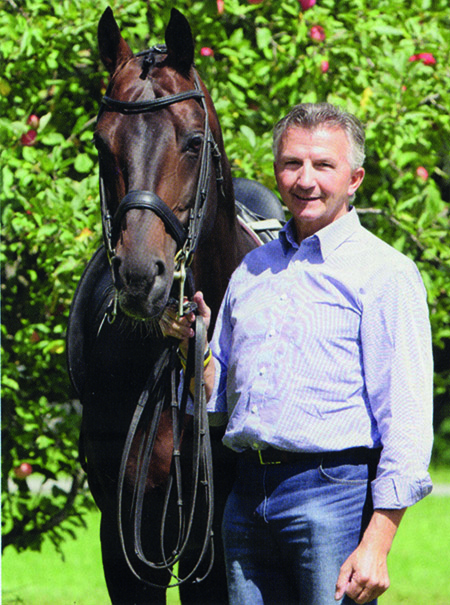
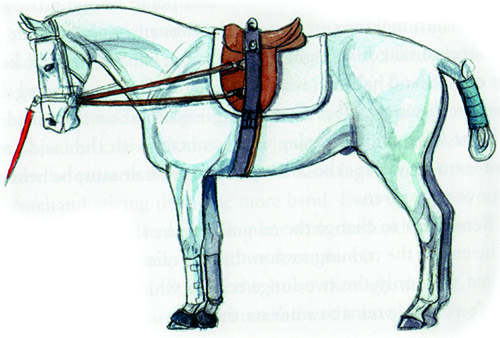
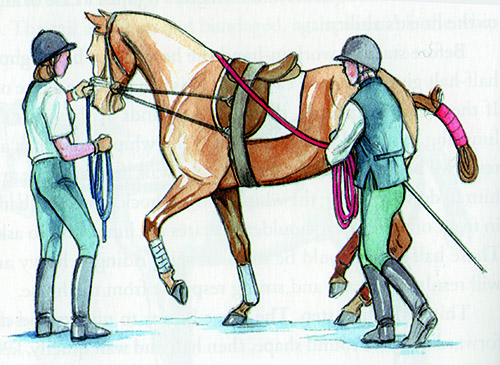
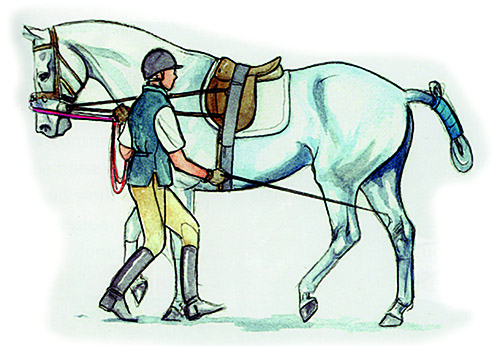
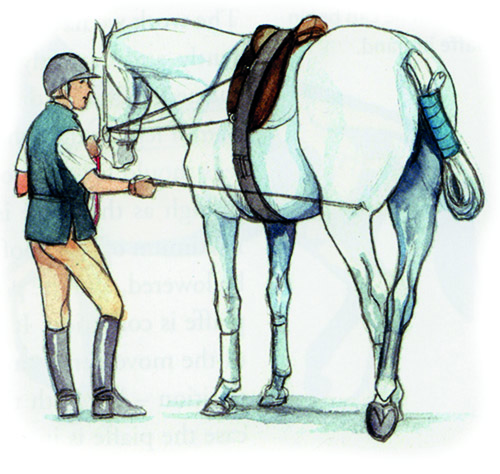
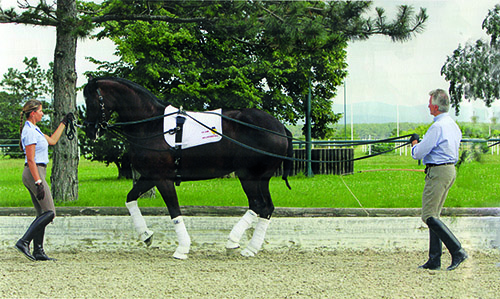
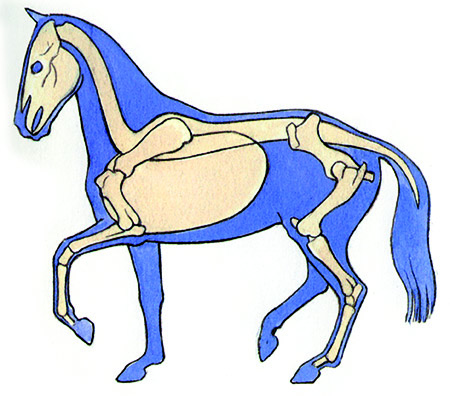
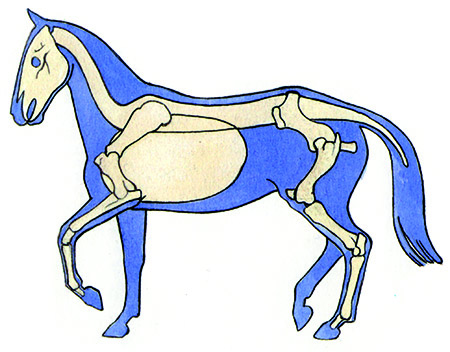
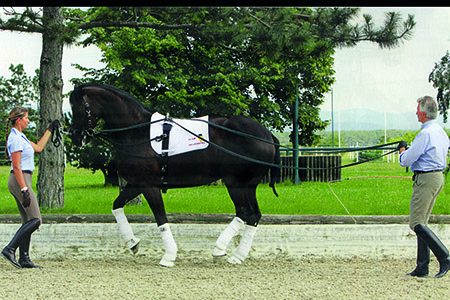
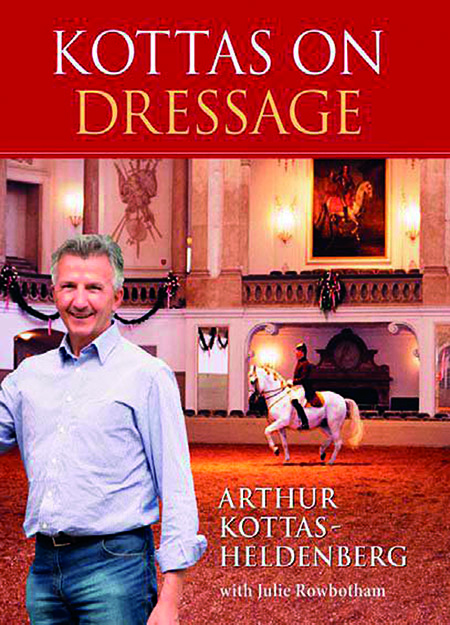
Why don’t you begin with long and low so the horse can learn to seek and stretch into contact as the old masters did?